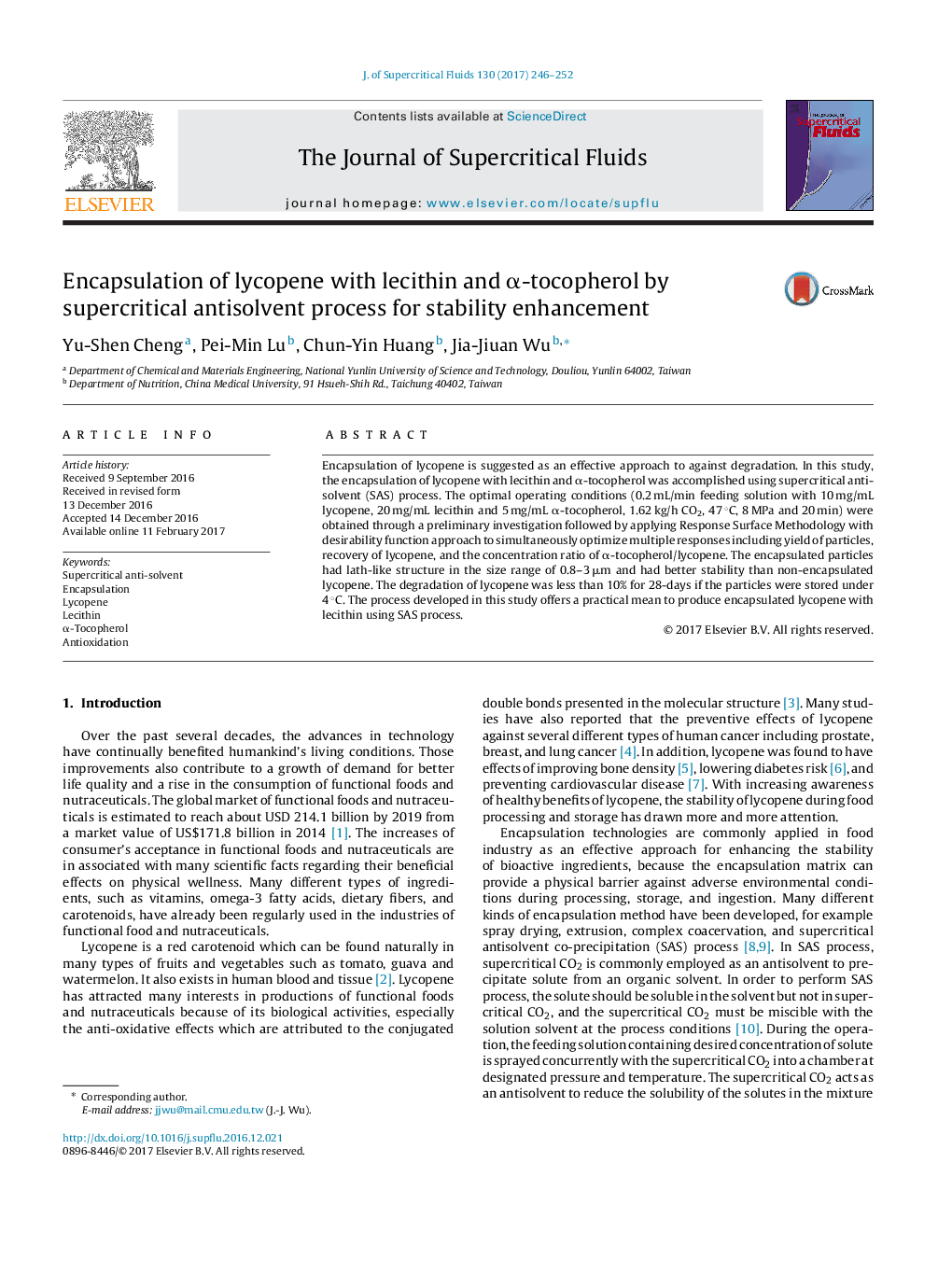| Article ID | Journal | Published Year | Pages | File Type |
|---|---|---|---|---|
| 6477701 | The Journal of Supercritical Fluids | 2017 | 7 Pages |
â¢Lecithin with α-tocopherol protected lycopene against oxidation by SAS process.â¢Higher pressure and solution flow rate had reverse effects on lycopene recovery.â¢A central composite design was used to optimize the SAS experiments.â¢Encapsulated lycopene had better stability than non-encapsulated lycopene.
Encapsulation of lycopene is suggested as an effective approach to against degradation. In this study, the encapsulation of lycopene with lecithin and α-tocopherol was accomplished using supercritical antisolvent (SAS) process. The optimal operating conditions (0.2 mL/min feeding solution with 10 mg/mL lycopene, 20 mg/mL lecithin and 5 mg/mL α-tocopherol, 1.62 kg/h CO2, 47 °C, 8 MPa and 20 min) were obtained through a preliminary investigation followed by applying Response Surface Methodology with desirability function approach to simultaneously optimize multiple responses including yield of particles, recovery of lycopene, and the concentration ratio of α-tocopherol/lycopene. The encapsulated particles had lath-like structure in the size range of 0.8-3 μm and had better stability than non-encapsulated lycopene. The degradation of lycopene was less than 10% for 28-days if the particles were stored under 4 °C. The process developed in this study offers a practical mean to produce encapsulated lycopene with lecithin using SAS process.
Graphical abstractEncapsulation of lycopene with lecithin and α-tocopherol by supercritical antisolvent process for stability enhancementDownload high-res image (125KB)Download full-size image
